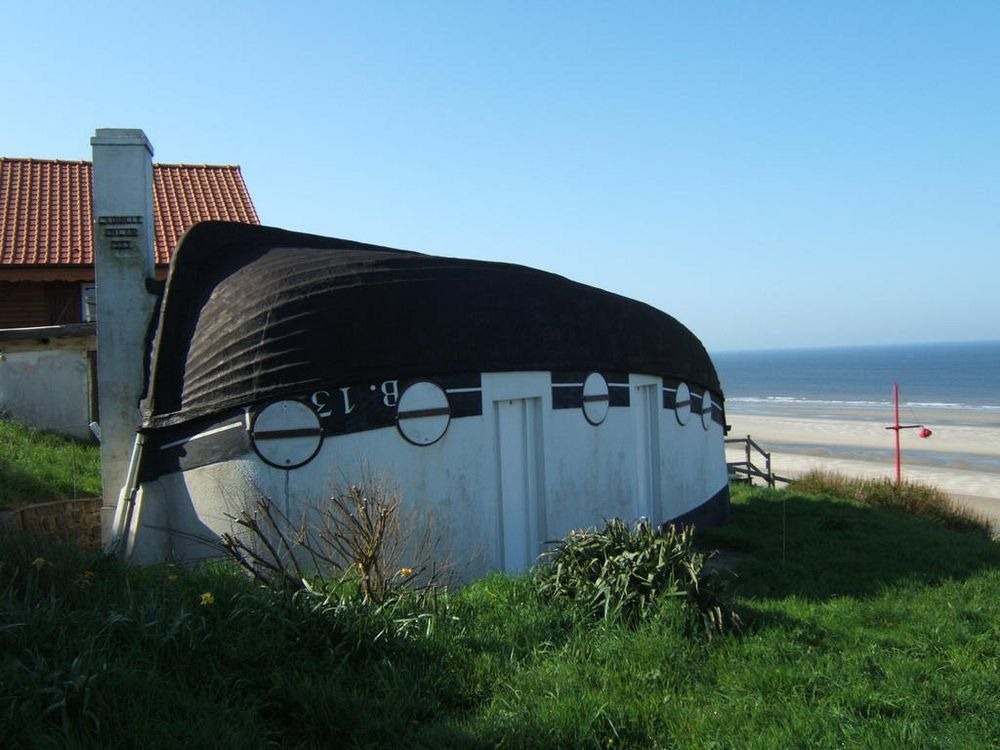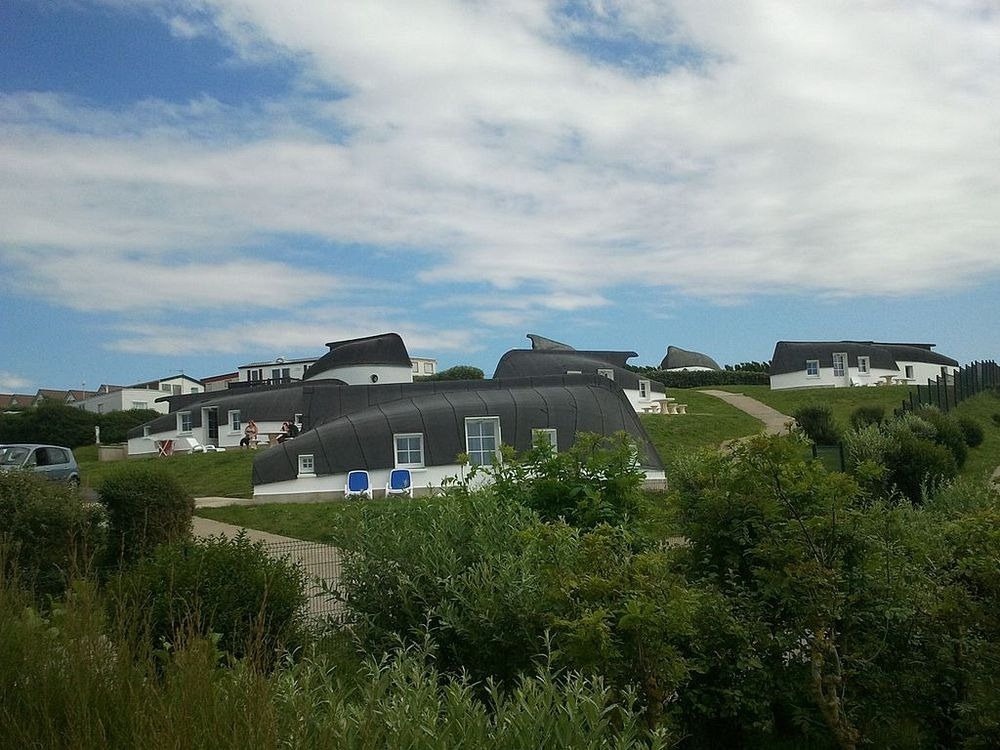Equihen Plage, on the coast of northern France by the English
Channel, is a small seaside village with a population of about
3,000. Up until the beginning of the 20th century, Equihen Plage
was a fishing village with a dry harbor—the kind where fishing
boats were launched into the sea by sliding them on logs. Today,
the village is famous for its many inverted boat houses—locally
known as “quilles en l'air”—that serve as unique holiday
accommodation for travellers
In the old days, it wasn’t uncommon to find old boats— both
upright and inverted—along the coast where they were dragged high
and dry upon the shore to be used for habitation. In Charles
Dickens' classic novel David Copperfield, Peggotty’s
brother lived in such an old boathouse in Yarmouth

In Equihen Plage too, old boats unworthy for the sea were
dragged up to high ground and turned upside down. The hull, which
now became the roof, was covered in tar to ensure that it was
watertight. A door cut out on the sides provided entry, while
windows let in air and light. Even then, the interior was dark and
stuffy.
The entire length of the boat served as a single room. Space for
cooking and sleeping were shared.
During the Second World War, nearly all the boathouses got
destroyed, but their legacy lingered on.
In the 1990s, about sixty years after their disappearance, the
village decided to revive the ancient heritage and erected a couple
of upturned boat houses and fitted them with modern facilities to
entice tourists. They can be now rented with prices starting from
about three hundred Euros.



